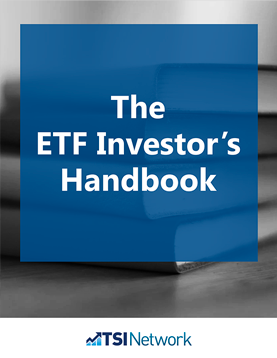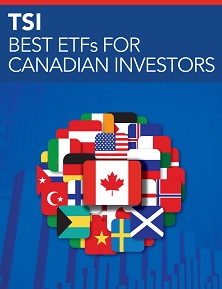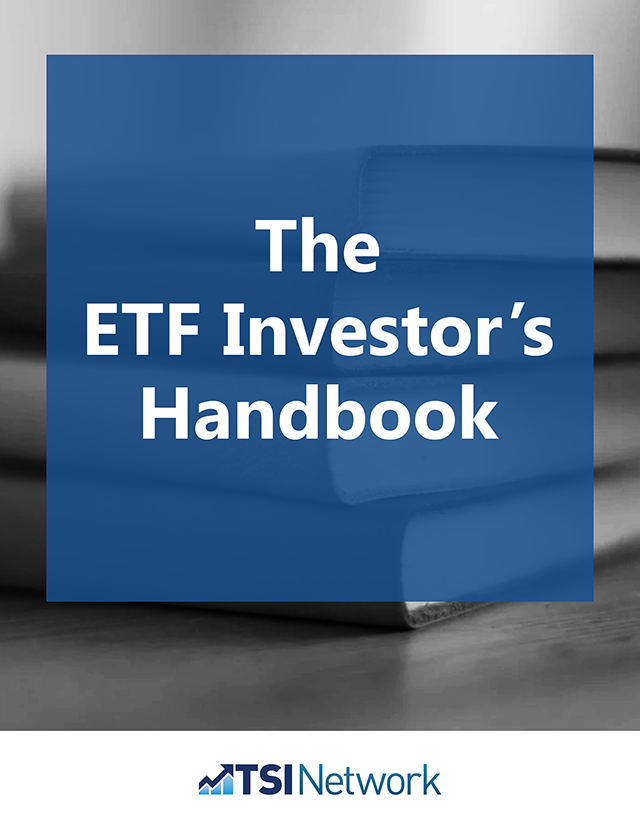Topic: ETFs
The Ins and Outs of Investing in Exchange Traded Funds
Discover the best ways you can add ETFs to your portfolio
ETFs are one of the most popular and most benign investing innovations of our time—and the best ETF investments can be great low-fee ways to hold shares in multiple companies with a single investment. The simplicity of investing in ETFs holds a lot of appeal for many investors. We’ve compiled some ETF definitions and tips so you can determine if ETFs are right for your portfolio.
What does ETF mean?
 How to Make Money with ETFsLearn everything you need to know in 'The ETF Investor's Handbook' for FREE from The Successful Investor. ETFs Guide for Canadian Investors: Find the best way to invest in ETFs with low fees, low risk & high satisfaction. |
ETF is an acronym for exchange-traded fund. These exchange-traded funds are used to track indexes as closely as possible, since it’s not practical for investors to actually buy an index outright.
How ETFs work
ETFs trade on stock exchanges, just like stocks. Investors can buy them on margin, or sell them short. That’s different from mutual funds, which you can only buy at the end of the day at a price that reflects the fund’s value at the close of trading. ETFs are also very liquid.
The best exchange-traded funds offer well-diversified, tax-efficient portfolios with exceptionally low management fees.
Prices of ETFs are quoted in newspaper stock tables and online. You pay brokerage commissions to buy and sell them, but their low management fees give them a cost advantage over most mutual funds.
As well, shares are only added or removed when the underlying index changes. As a result of this low turnover, you won’t incur the regular capital gains taxes generated by the yearly distributions most conventional mutual funds pay out to unitholders.
3 ETF Definitions You Need to Know ETF
Definition #1: Short ETFs
Short ETFs are exchange-traded funds (ETFs) that are “set up to move in the opposite direction of particular stock indexes”. A short ETF is designed to rise in value as the underlying market index falls: if the index falls by 1%, the shares of the ETF should rise by 1% and so on. Known as “short ETFs” or “bear market ETFs” they may appeal to some investors during volatile markets.
However, as a general rule, we advise against short selling as much as we advise against options trading, leverage, currency speculation and bond trading. In all of these activities, it’s a rare investor who makes enough profit to compensate for the risk involved. Our view is that if you like the outlook for a market index, you should invest in stocks that will profit from a rise in that index.
Institutional investors, particularly hedge funds, sometimes carry out around 60% of all trading in leveraged and inverse-leveraged investments. They generally use them as part of complicated multi-investment trading gambits. They also trade frequently, and in large quantities. This reduces the percentage costs of this kind of trading. However, the trading costs still tend to eat up the invested capital.
One added concern is counterparty risk. That’s the chance the other party in a contract to repurchase securities will default on their obligations. Counterparty risk increases during times of extreme market volatility.
Definition #2: Leveraged ETFs
There are a number of ETFs and other types of investments that aim to offer a two-for-one leveraged bet on the direction of oil prices and other commodity or index prices. These are leveraged ETFs. Others offer an inverse bet—they aim to go twice as fast as the underlying commodity, index or whatever, but in the opposite direction.
As a general rule, we advise against investing in leveraged ETFs, or anything that requires successful market timing. That includes short selling, options trading, or short term trading of any sort. As we mentioned above, in all of these activities, it’s a rare investor who makes enough profit to compensate for the risk involved. That’s why we don’t suggest investing in leveraged ETFs.
You can get lucky in anything. But in investments like these, you won’t get lucky enough, often enough, to overcome the built-in costs.
Definition #3: What are “new” ETFs?
ETFs are exchange-traded funds that aim to copy the performance of a particular stock index. Most of the model indices were well-known, widely followed collections of actively traded stocks.
However, new exchange traded funds aim to broaden investment opportunities for investors, and at the same time create new profit opportunities for the financial companies that sponsor them.
As a result, many new ETFs focus on mimicking much narrower indices and higher-risk strategies, instead of giving you a low-cost way to copy the results of a standard market index. They may give you a way to invest in a particular foreign stock market—coupled, in many cases, with an arrangement that hedges against movements in the foreign currency in which that foreign market carries on its trading. Or they may give you a way to participate in a particular stock-market strategy or a narrow niche such as solar power.
A new ETF typically carries a higher MER than an old one. Based solely on MERs, they’re still cheaper to invest in than conventional mutual funds—but many new ETFs need to delve into frequent trading or derivatives of various sorts to accomplish their stated objectives.
We believe investment quality varies just as widely with new ETFs as it does with new stock issues. Only a handful of them are worth holding, and only if you find their investment premise irresistible. Otherwise, you can find better investments.
The hidden risks of hedged ETFs
Adding more features (sometimes referred to as “wrinkles” or “bells & whistles”) can make investing in ETFs attractive to a wider range of investors. Adding features also adds profit opportunities for the sponsoring institution.
For example, consider a typical ETF that gives you exposure to movements in an index of stock prices in an emerging market. This may appeal to investors who are thinking of investing in ETFs or other stocks in that market. But conservative investors may hesitate to buy, because they worry about currency movements in the emerging market. So the financial industry has come up with “hedged” ETFs.
The sales pitch is that you can profit from growth in the stock market of the emerging economy, but you avoid foreign-exchange risk because the ETF operator hedges against it. This conveniently overlooks the fact that hedging costs money.
Hedging costs will vary, depending on conditions in the foreign-exchange market, and on how an ETF carries out its hedging program. These fees can double or triple the typical 0.30% to 0.70% ETF management fee.
You’ll need to dig deep to find out how much you pay for an ETF’s hedging feature. But you can be sure that the placing of each new hedge provides a profit opportunity for the ETF sponsor.
Our view: simple is better. If you want to invest in something like emerging-economy stocks, limit your stake to a point where you can accept the associated foreign exchange risk. If you buy an ETF, choose a “plain vanilla” unhedged version.
Or, to adapt yet another old investor saying, “If the foreign-exchange risk on your emerging-market investments keeps you awake at night, sell down to the sleeping point.”
Tips for trading ETFs
- ETFs can be volatile, even with the diversification they typically offer.
- Know how broadly diversified the fund is so you can determine its volatility. The broader the ETF, the less volatility in general it will have.
- Know the economic stability of countries when investing in international ETFs.
- Know the liquidity of ETFs you invest in.
- Consider buying ETFs in a lump sum, rather than a number of small amounts, to avoid higher brokerage fees.
Follow our three-part Successful Investor strategy
- Invest mainly in well-established companies;
- Spread your money out across most if not all of the five main economic sectors (Manufacturing & Industry; Resources & Commodities; the Consumer sector; Finance; Utilities);
- Downplay or avoid stocks in the broker/media limelight.
Have you made ETF investments? If so, how have they performed for you? Share your experience with us in the comments.



